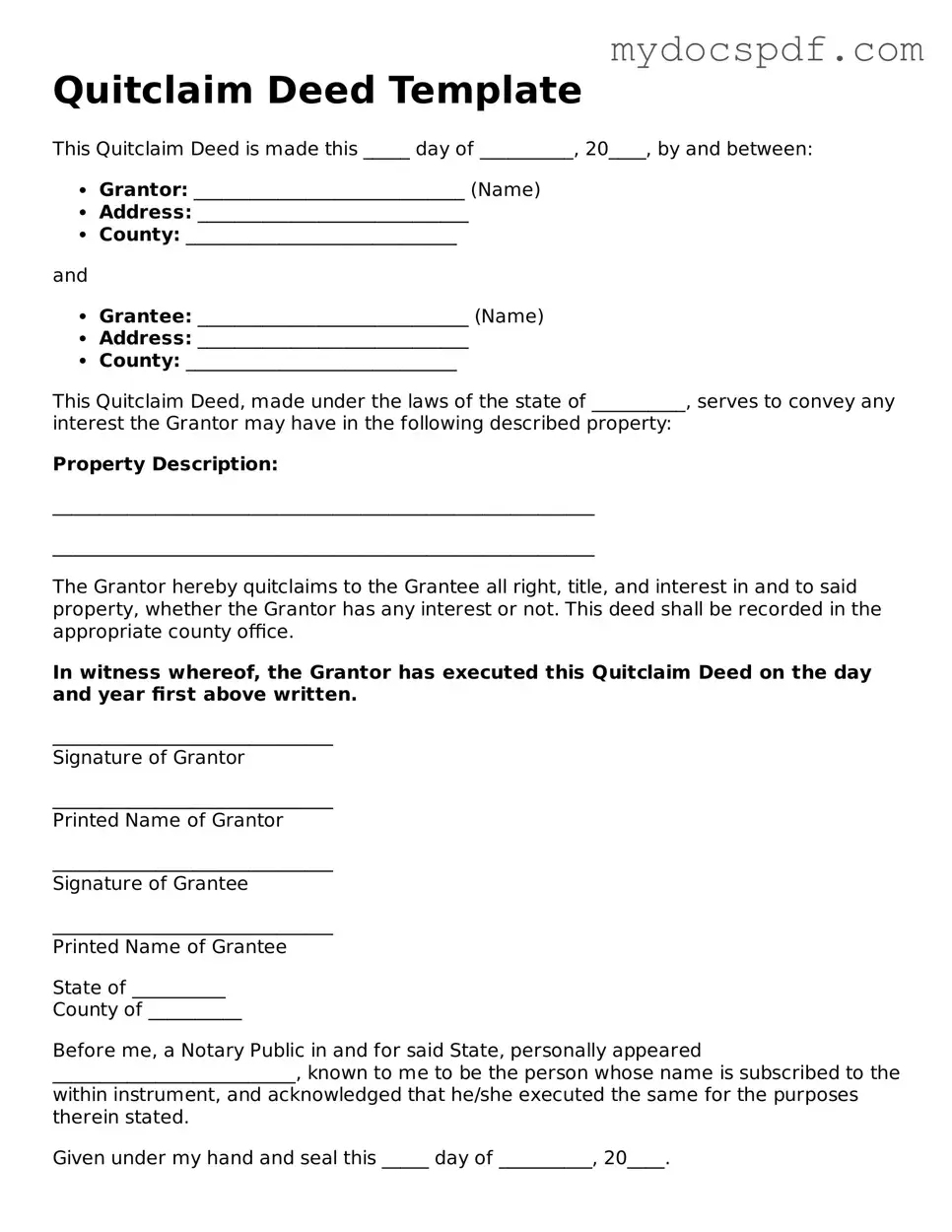Quitclaim Deed Template
This Quitclaim Deed is made this _____ day of __________, 20____, by and between:
- Grantor: _____________________________ (Name)
- Address: _____________________________
- County: _____________________________
and
- Grantee: _____________________________ (Name)
- Address: _____________________________
- County: _____________________________
This Quitclaim Deed, made under the laws of the state of __________, serves to convey any interest the Grantor may have in the following described property:
Property Description:
__________________________________________________________
__________________________________________________________
The Grantor hereby quitclaims to the Grantee all right, title, and interest in and to said property, whether the Grantor has any interest or not. This deed shall be recorded in the appropriate county office.
In witness whereof, the Grantor has executed this Quitclaim Deed on the day and year first above written.
______________________________
Signature of Grantor
______________________________
Printed Name of Grantor
______________________________
Signature of Grantee
______________________________
Printed Name of Grantee
State of __________
County of __________
Before me, a Notary Public in and for said State, personally appeared __________________________, known to me to be the person whose name is subscribed to the within instrument, and acknowledged that he/she executed the same for the purposes therein stated.
Given under my hand and seal this _____ day of __________, 20____.
______________________________
Notary Public
My commission expires: ____________
